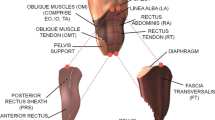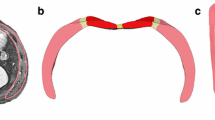Abstract
Hernia is defined as the protrusion of one or several internal organs through an opening in the cavity that contains them due to a tissue defect, abdominal wall surgery by means of synthetic meshes is the most common method used for hernia repair, however, postsurgical effects can range from some discomfort, to chronic pain and even the reappearance of the hernia due to a poor mechanical adaptability between the synthetic tissue and the host tissue. The knowledge of the mechanical properties of the materials involved in hernia repair is fundamental in the understanding and subsequent solution of this type of problems. In this work, experimental data were obtained by means of uniaxial tensile tests in two perpendicular directions of commercial meshes used in hernia repair. The tests were carried out on the UniVert® machine of the CellScale® brand. Anisotropic mechanical behavior is observed due to the structure of the mesh and the interaction between each of the yarns that make it up. The data found vary with respect to the direction of traction and also has non-linear hyperelastic behavior, so the adjustment of curves was made through a hyperelastic model in the COMSOL Multiphysics® software through the Levenberg-Marquardt Algorithm for the characterization of these materials.
Similar content being viewed by others
References
B. Hernández Gascón, “Mechanical modelling of the abdominal wall and biomaterials for hernia surgery,” 2013.
B. Hernández et al., “Mechanical and histological characterization of the abdominal muscle. A previous step to modelling hernia surgery,” J. Mech. Behav. Biomed. Mater., vol. 4, no. 3, pp. 392–404, 2011.
P. Pachera, P. G. Pavan, S. Todros, C. Cavinato, C. G. Fontanella, and A. N. Natali, “A numerical investigation of the healthy abdominal wall structures,” J. Biomech., vol. 49, no. 9, pp. 1818–1823, 2016.
T. Förstemann et al., “Forces and deformations of the abdominal wall-A mechanical and geometrical approach to the linea alba,” J. Biomech., vol. 44, no. 4, pp. 600–606, 2011.
L. Ethicon US, “No TitleHernia Mesh & Fixation.” [Online]. Available: https://www.ethicon.com/na/epc/search/platform/herniamesh%26fixation?filters[field_brand][3]=PROLENE®&lang=en-default&last=field_brand.
P. Mesh, “Distribución y tamaño.” pp. 0–1.
C. Kumar, “No Title,” Fitting Measured Data to Different Hiperelastic Material Models, 2015. [Online]. Available: https://www.comsol.com/blogs/fitting-measured-data-to-different-hyperelastic-material-models.
Author information
Authors and Affiliations
Rights and permissions
About this article
Cite this article
Ortiz, J.O., de laTorre, G.C., Galindo, M.V. et al. Hyperelastic characterization of synthetic mesh for abdominal wall hernia repair. MRS Advances 4, 3181–3185 (2019). https://doi.org/10.1557/adv.2019.399
Published:
Issue Date:
DOI: https://doi.org/10.1557/adv.2019.399




